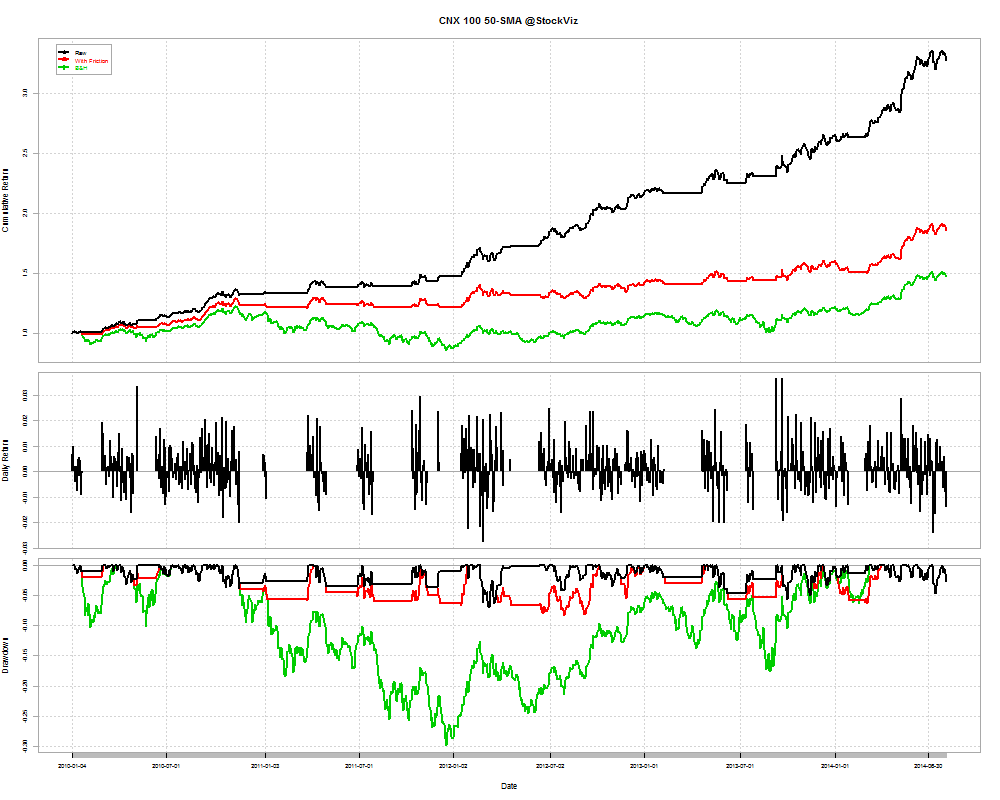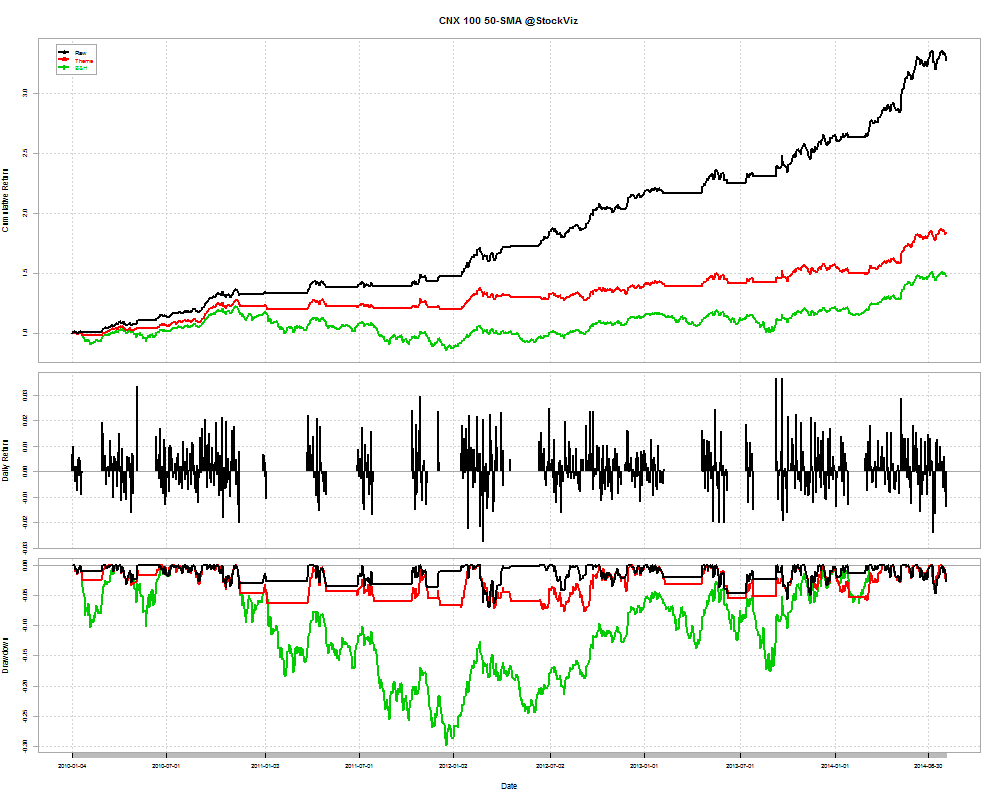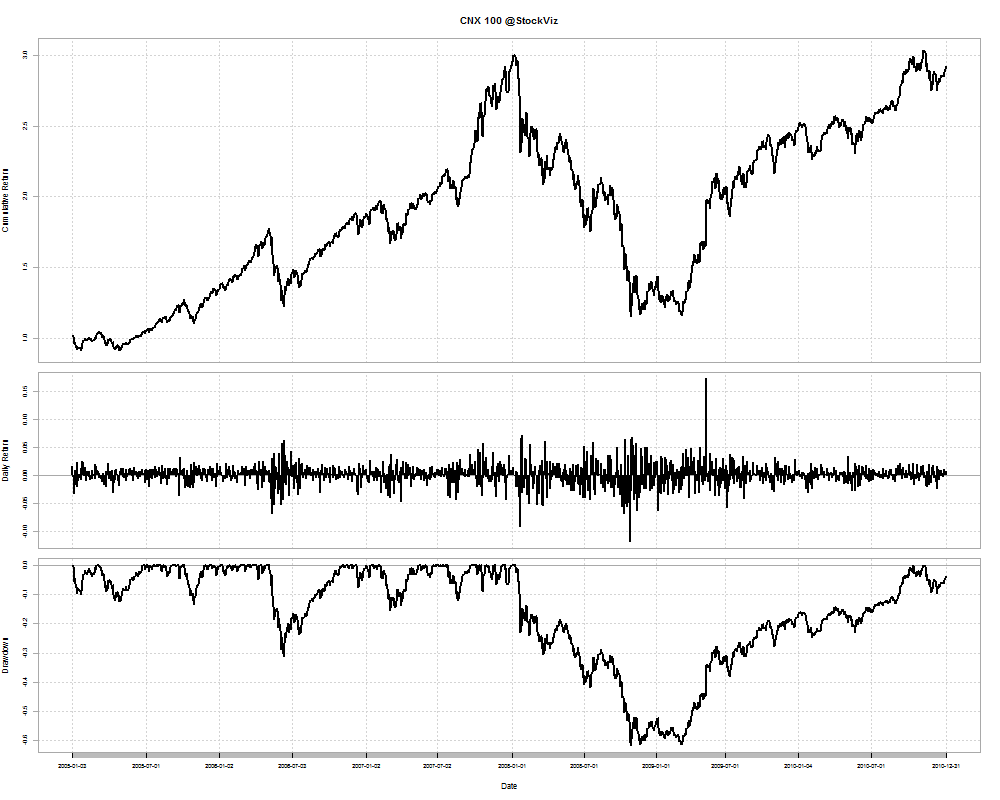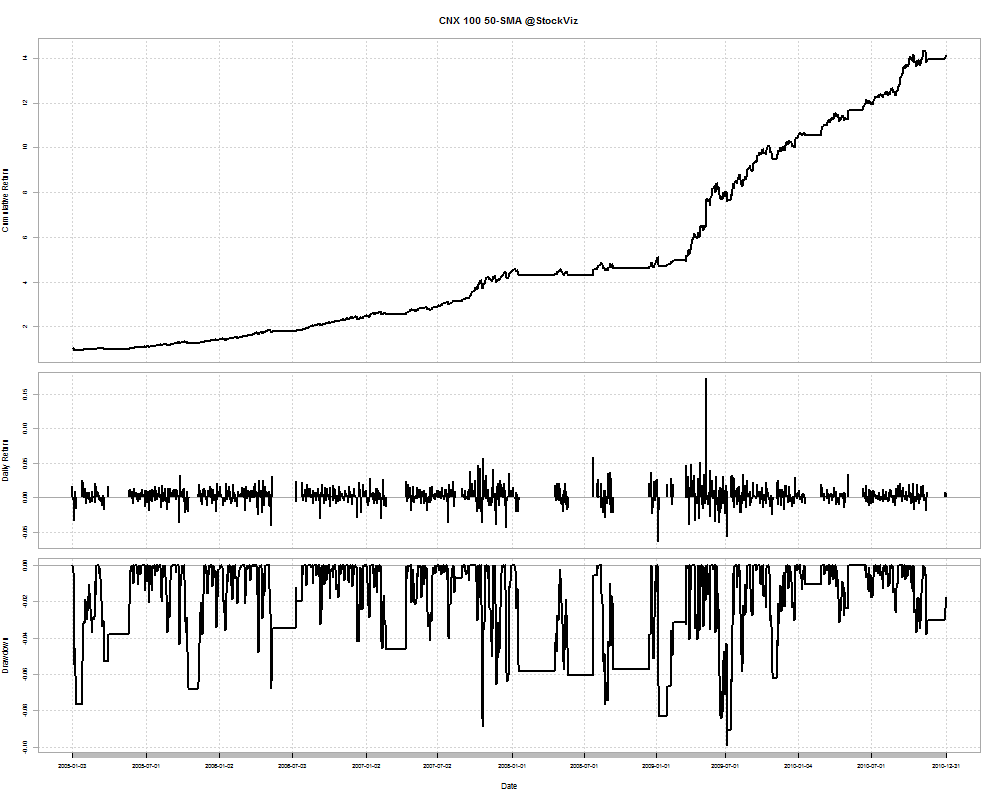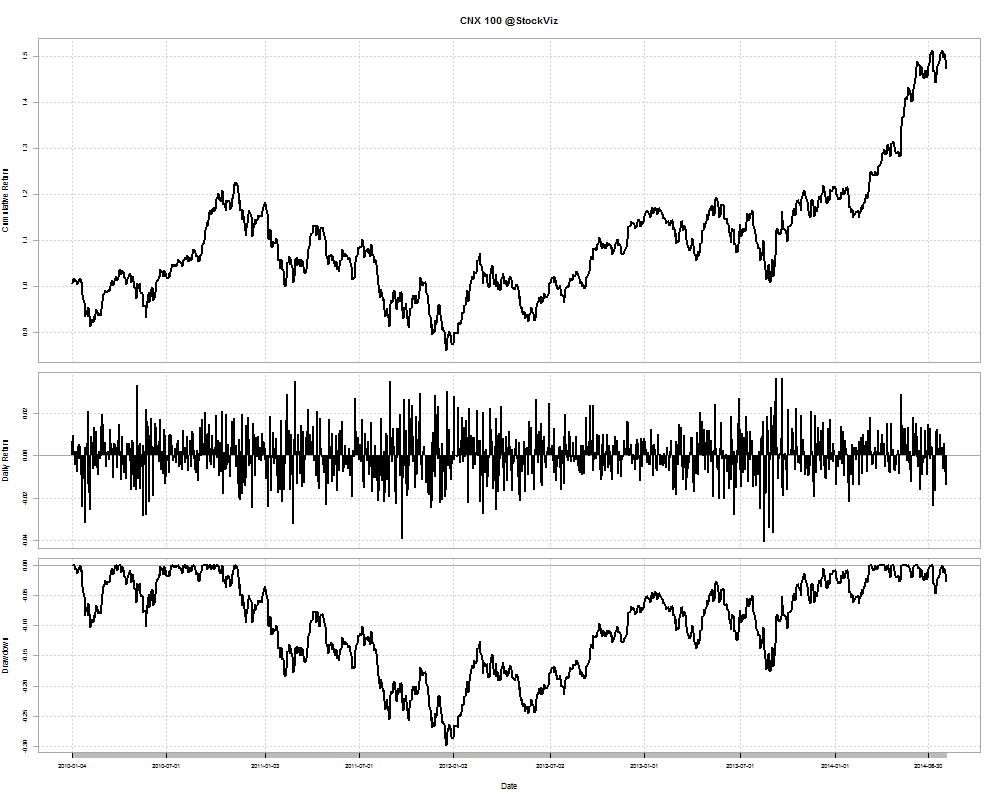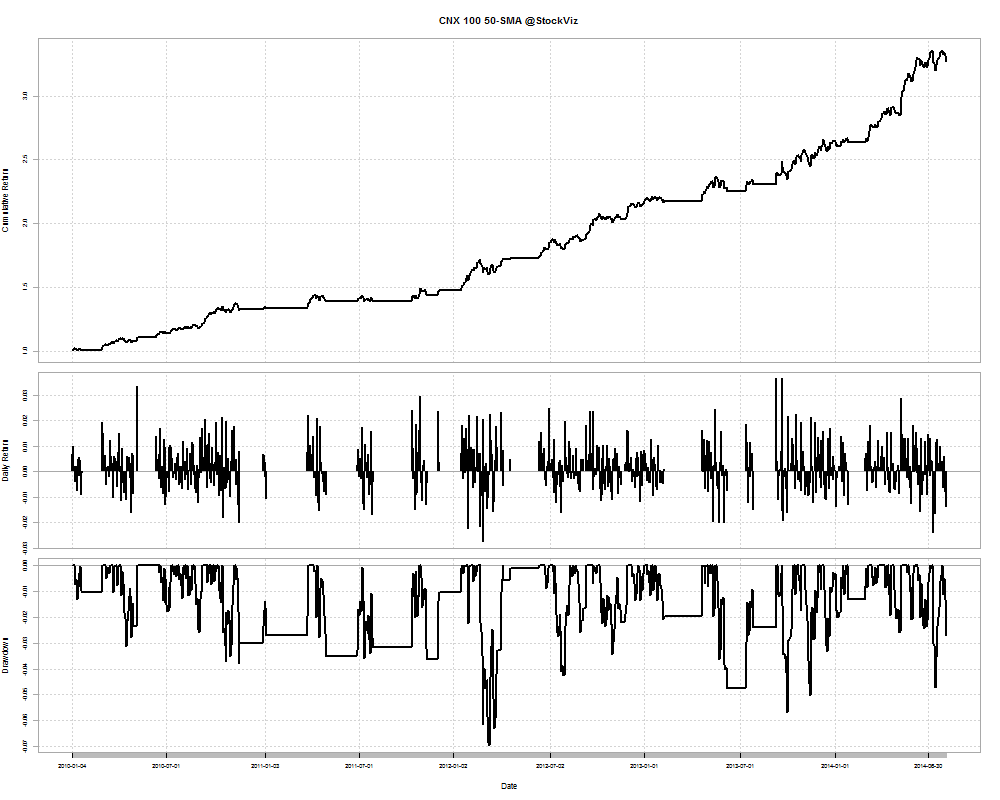Introduction
We saw how a CNX 100 50-day tactical investment strategy boosts returns of a naive buy-and-hold strategy (here) even while considering trading costs and other friction (here.) To visualize how this works, lets have a look at the histogram of daily returns since 2010 (1150 trading days.)
Naive buy-and-hold
| Daily Returns | |
|---|---|
|
<= -2%
|
36 days
|
|
<= -1%
|
165 days
|
|
>= +2%
|
41 days
|
|
>= +1%
|
188 days
|
|
Average
|
+0.04%
|
|
Std. Dev.
|
1.07
|
200-day SMA switch
| Daily Returns | |
|---|---|
|
<= -2%
|
16 days
|
|
<= -2%
|
85 days
|
|
>= +2%
|
21 days
|
|
>= +1%
|
122 days
|
|
Average
|
+0.07%
|
|
Std. Dev.
|
0.79
|
100-day SMA switch
| Daily Returns | |
|---|---|
|
<= -2%
|
11 days
|
|
<= -2%
|
66 days
|
|
>= +2%
|
21 days
|
|
>= +1%
|
114 days
|
|
Average
|
+0.09%
|
|
Std. Dev.
|
0.74
|
50-day SMA switch
| Daily Returns | |
|---|---|
|
<= -2%
|
7 days
|
|
<= -2%
|
53 days
|
|
>= +2%
|
24 days
|
|
>= +1%
|
110 days
|
|
Average
|
+0.11%
|
|
Std. Dev.
|
0.71
|
Conclusion
Even after considering trading costs, impact costs and tracking error, this strategy comes out way ahead of a naive buy-and-hold strategy. Better returns than buy-and-hold with lower volatility and at a low cost!
You can follow the Theme here.







